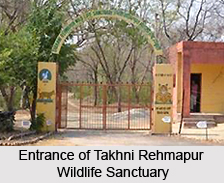 Mukerian is a city located in the Hoshiarpur district of the north Indian state of Punjab. It is located north of Hargovindpur at a distance of 32 km. Perched at a height of 245 metres (803 feet) above mean sea level Mukerian is located between 31.95° North latitude and 75.62° East longitude. Strategically located on N H 1A it lies in the southeast of Gurdaspur at a distance of 24 km. The town of Pathankot lies in the north of Mukerian at a distance of 44 km. and the town of Hoshiarpur is in the southeast at a distance of 58 km. The nearest international airport is at Amritsar and the nearest railway station is the Mukerian Railway Station on the Pathankot - Jalandhar rail route of Northern Railways.
Mukerian is a city located in the Hoshiarpur district of the north Indian state of Punjab. It is located north of Hargovindpur at a distance of 32 km. Perched at a height of 245 metres (803 feet) above mean sea level Mukerian is located between 31.95° North latitude and 75.62° East longitude. Strategically located on N H 1A it lies in the southeast of Gurdaspur at a distance of 24 km. The town of Pathankot lies in the north of Mukerian at a distance of 44 km. and the town of Hoshiarpur is in the southeast at a distance of 58 km. The nearest international airport is at Amritsar and the nearest railway station is the Mukerian Railway Station on the Pathankot - Jalandhar rail route of Northern Railways.
The Indian Census report, which came out in 2001 reveals that Mukerian, had a population of 21, 379. Out of it, males constitute 52% of the population and females comprises of the remaining 48%. In Mukerian, 11% of the population is less than six years of age. The Census report also states that the average literacy rate of Mukerian is 77%, which is higher than the national average literacy rate, which is 59.5%. The male literacy rate is 80% and the female literacy rate is 74%. The educational facilities available in Mukerian are responsible for such a high literacy rate.
Takhni-Rehmapur Wildlife Sanctuary and Bhakra Nangal Dam are easily accessible from Mukerian.



















